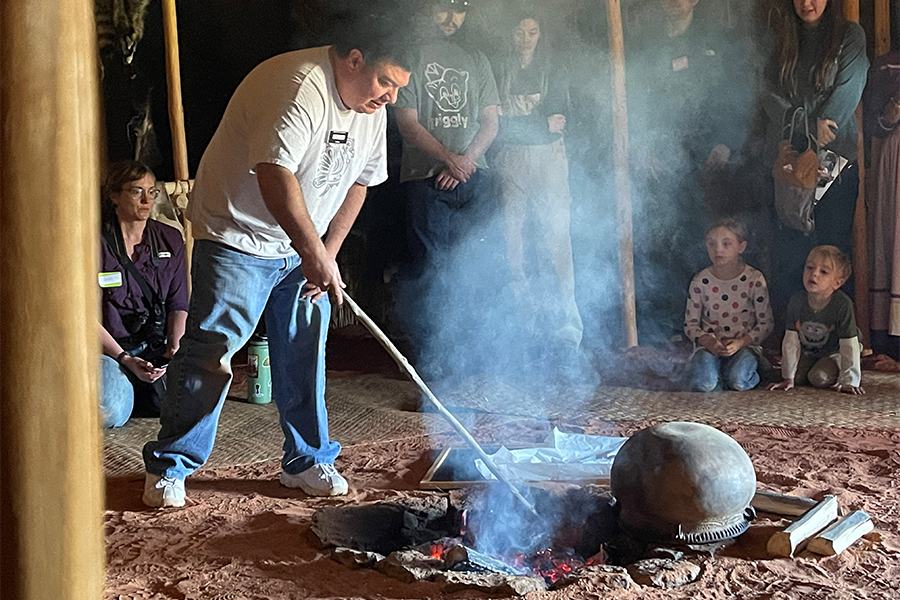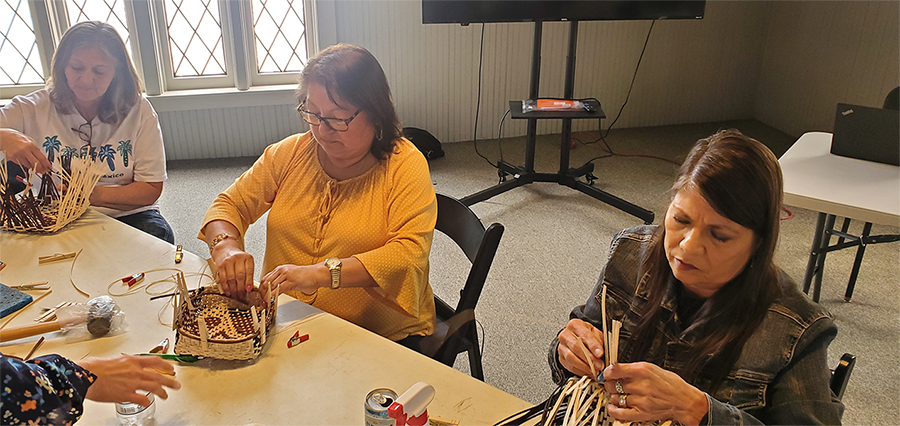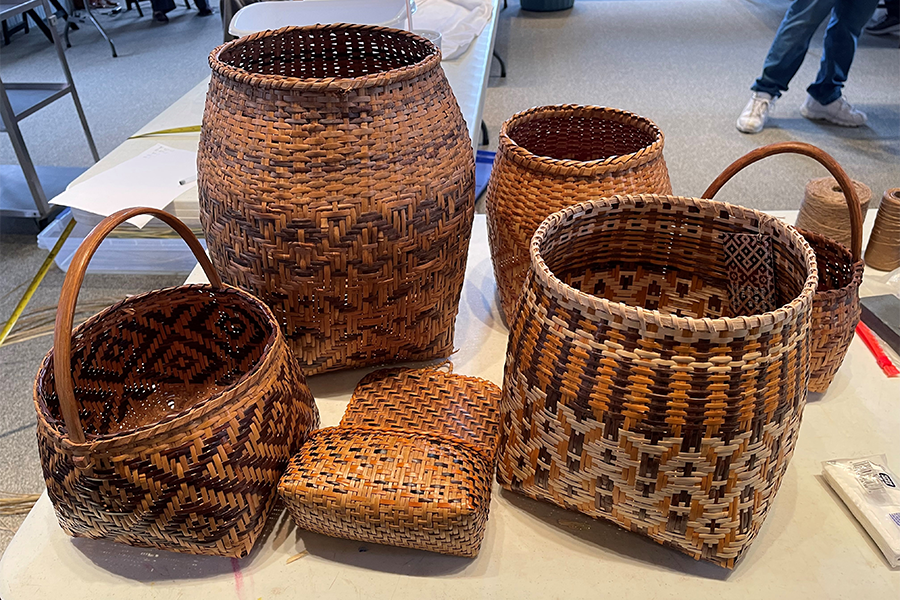
June 18, 2025
By Ryan LaFontaine
Alto, Texas — Joining forces with local partners, the Texas Department of Transportation (TxDOT) is helping to revive a centuries-old basket making tradition using rivercane.
In a unique partnership celebrating culture and environmental stewardship, TxDOT and the Caddo Mounds State Historic Site are working together to preserve this unique way of weaving baskets using rivercane, a once-abundant natural resource that has nearly vanished from East Texas.
For more than 1,200 years, the Caddo Nation thrived in Northeast Texas, building villages and mounds, crafting intricate stone tools, pottery and jewelry, and farming the land.
Central to their culture was the use of rivercane—a tall, green bamboo-like plant once common along Texas rivers and streams.
The Caddo used rivercane to weave baskets, mats, fishing rods and shooting darts. However, as urban development, land management and other practices took their toll, rivercane stands dwindled, and with them, the traditional basket making art nearly disappeared.
TxDOT’s Environmental Affairs Division, tasked with assessing archeological sites and protecting Native American cultural resources during transportation projects, encountered Caddo artifacts during road construction in historically Caddo territory. In collaboration with the Caddo Nation, TxDOT sought ways to honor the archeological site. This led to a groundbreaking cultural preservation effort.
“We realized that while many Caddo crafting traditions endured, the skill of weaving baskets from hand-harvested rivercane had been lost,” said Rebekah Dobrasko, cultural resources section director for TxDOT. “So, we partnered with Caddo Mounds State Historic Site and renowned Caddo potter Chase Earles to restore this beautiful tradition.”

Over a series of workshops, seven Caddo members learned to identify healthy rivercane stands—plants about 8 to 10 feet tall, thick as a thumb, with a vibrant green color—and harvest the cane sustainably.
They mastered the meticulous process of cutting, peeling, dyeing, and weaving rivercane into traditional basket patterns. The workshops were guided by experienced basket makers, including Chickasaw Hall of Famer Sue Fish and Cherokee National Treasure Vivian Cottrell, who shared their expertise and cultural knowledge.
The results were historic: The participants crafted the first hand-harvested Caddo rivercane baskets in more than 800 years.
Reviving rivercane is not without challenges. The plant is now rare in Texas. The Caddo Mounds State Historic Site is nurturing new rivercane stands on its grounds, which can take nearly a decade to mature.
TxDOT is also committed to preserving rivercane within its transportation rights-of-way and collaborating with other tribes, such as the Alabama-Coushatta, Cherokee and Choctaw Nations, who are similarly invested in the plant’s cultural significance and restoration.
This initiative represents more than cultural preservation—it is a reclamation of natural and historical heritage, a bridge between past and present. A new PBS documentary about the project shares the story of rivercane’s revival and cultural significance with a broader audience.
As TxDOT’s partnership with tribal communities continues, the agency is dedicated to developing programs that honor both natural resources and cultural traditions—ensuring that the voices and stories of Native American tribes remain an integral part of Texas’ landscape and legacy.
